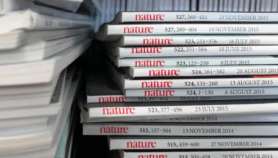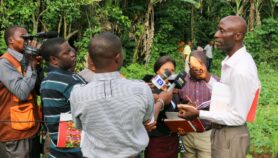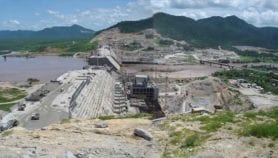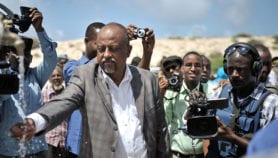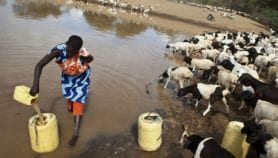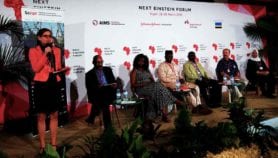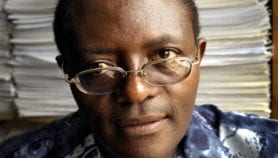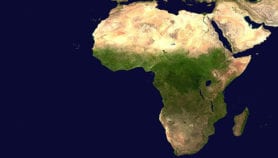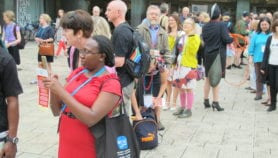Send to a friend
The details you provide on this page will not be used to send unsolicited email, and will not be sold to a 3rd party. See privacy policy.
The African media can play a crucial role in communicating climate information to the public, says Patrick Luganda.
Coping with climate change is emerging as a major challenge for Africa. Ordinary people have begun observing the dramatic shift in the continent’s climate — but they do not know what to do about it.
The media can play a crucial role in disseminating useful climate information to effectively guide public debate and understanding about the weather, climate and climate change.
Extensive rain-fed agricultural systems in Africa mean seasonal forecasts and climate information are in constant demand. Millions of farmers are grappling with the changing climate around them but are starved of real, timely information on what their options are.
Still, it is not uncommon to hear them talking about ongoing changes in rainfall patterns. Indeed, as climate change takes centre stage in Africa, everybody is talking about it — in markets, gardens, homes and communities.
Better understanding through dialogue
Dialogue can make climate change seem less puzzling and, if well informed, it is a cheap and powerful development tool. Person to person communication is perhaps the most effective form of information dissemination in Africa and can influence decision-making.
Regular, accurate communication about climate change is the first step toward developing coping mechanisms in Africa.
Communication has already proved a powerful tool for disaster management. In the war against HIV/AIDS, conferences, radio broadcasts, community mobilisation meetings and seminars have helped stem the disease’s spread in Kenya and Uganda, and increasingly in the Southern Africa Development Community countries.
Governments need to replicate these communication strategies in the climate sector to develop successful coping strategies. Informing the public about an upcoming drought, for instance, gives people time to plan how to cope. Similarly, new information can help governments make better preparations for a potential disaster.
What the media can do
Over 70 per cent of environmental disasters in Africa — such as flooding, drought, starvation and disease — are caused, or exacerbated, by changing climatic conditions. If the general public is made more aware of this relationship, and kept informed of changing conditions, intervention strategies can be made in good time.
The media must develop the capacity to achieve this goal. In the past, the African media has shown little understanding about weather and climate. Climate scientists in general are often accused of working in isolation. And, complicated scientific language aside, much climate information is often considered boring and unexciting.
This situation must change if the media is to be a meaningful and cost efficient way of bridging the communication gap between climate experts and the rest of African society.
Journalists must work with scientists to keep up to date with the latest developments, understand the significance of research findings and identify the information that is most relevant to people’s everyday lives.
Networking frameworks, where the media can meet and interact with climate scientists, should be put in place. More training programmes are needed to instruct journalists in climate reporting. Scientific institutions and journals must ensure that reporters have better access to climate information. The media also needs to participate in communication research into weather forecasts, disaster risk, climate change and rural livelihood improvement.
With a better understanding of the climate and its positive attributes, the media can help millions of people. For example, if the media knows when rains are likely to start and their likely intensity, it can help mobilise farmers to plant their crops at the right time. Journalists working closely with scientists could also give livestock farmers advice during times of drought, warning them to sell some of their animals before they are killed off by the harsh conditions, for example.
Encouraging signs ahead
Efforts are already underway to improve the media’s access to and understanding of climate science.
In 2001, the Network of Climate Journalists in the Greater Horn of Africa was set up. The network holds workshops and bi-annual forums to bring together journalists and climate scientists from Burundi, Djibouti, Ethiopia, Eritrea, Kenya, Rwanda, Somalia, Sudan, Tanzania and Uganda.
In February, a technical conference of climate experts in Burkina Faso will meet to discuss proposals for increasing the network to cover the whole continent.
But there is still a long way to go before the public can be truly plugged into climate science. Climate information is a perishable product — delayed delivery makes it worthless. On the other hand, timely delivery can boost earnings, save lives and improve livelihoods.
People must have confidence in climate science ‘products’. Africa needs to increase its capacity for training journalists in climate science. But climate scientists also need to understand and appreciate how the media works.
Patrick Luganda is chairman of the Network of Climate Journalists in the Greater Horn of Africa Secretariat based in Kampala, Uganda.


